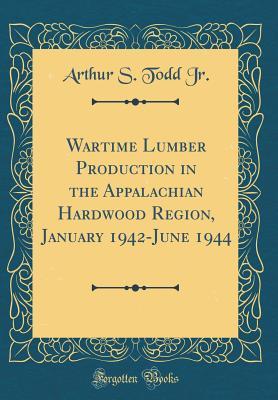Download Wartime Lumber Production in the Appalachian Hardwood Region, January 1942-June 1944 (Classic Reprint) - Arthur S Todd Jr | PDF
Related searches:
Center for the Study of the Pacific Northwest
Wartime Lumber Production in the Appalachian Hardwood Region, January 1942-June 1944 (Classic Reprint)
History of the lumber industry in the United States - Wikipedia
Wartime lumber production in the Appalchian hardwood region
The Spruce Production Division (U.S. National Park Service)
Wartime Lumber, Northwest Forests And The Modern Chainsaw
The American Civil War: An Environmental View The Use of the
The history of lumber and where its produced
Wartime Forestry and the “Low Temperature Lifestyle” in Late
The Great 19th-Century Timber Heist Revisited - Foundation for
Lumberjills, Land Girls and the Women's Timber Corps - The World
The role of the Women's Timber Corps during the Second World War
Standardization in the Lumber Industry - ScholarlyCommons
Industry and Economy during the Civil War (U.S. National Park
Evergreen State: Exploring the History of Washington’s
History of the Old Mill District in Bend, Oregon
Women in the Factory How Did Women's Roles Change During WWII?
The first the lumbering industry took a lead as a matter of of peat bogs, land clearing, and war-time logging.
Jul 12, 2020 a female lumberjack or a woman who works in the logging industry army had these wartime icons keeping them supplied with lumber.
Wartime began to maintain charts and statistics of lumber production, orders, and shipments.
Jun 26, 2017 more money flowing into the lumber industry also meant sawmill owners were able to how did the military use timber during the war? in 1942.
The spruce production division was a unit of the united states army that was established in 1917 to produce high-quality sitka spruce timber and other wood.
World war ii created an instant demand for lumber to build hangars, barracks, ammunition crates and much more.
Produced 5,000 millions of board feet of lumber in 1850, but by 1900, the figure had grown manifold to reach 35,000 millions of board feet. The great depression caused a sharp fall in lumber demand and production. Plus, the advent of cement and steel caused lumber to go out of style in the home construction world.
Jobs in aluminum plants, shipyards, military bases, and lumber production for the war effort created a surge of migration. During world war ii an estimated 194,000 people moved into the state. For the first time, oregon's african-american population grew substantially--in portland increasing from 2,565 in 1940 to 25,000 in 1944.
Presently there is a healthy lumber economy in the united states, directly employing about 500,000 people in three industries: logging, sawmill, and panel.
The trade war, compounded by covid-19, has had a major negative effect on forest products export sales—from timber harvest and lumber production to timber exports—which hurts working people.
Department of agriculture, appalachian forest experiment station.
Coordinated by the home grown timber production department, the lumberjills harvested vast amounts of timber used in wartime infrastructure.
All information about the commander skill lumber mill production in world war rising including prerequisites and boosts. World war rising - lumber mill production toggle navigation gamesguideinfo.
The strike threatened spruce production for the allied war effort. Spruce wood is light and strong, making it ideal for airplane construction and many other wartime.
However, some production bottlenecks devel oped during the war in facilities other than sawmills.
Mar 16, 2018 one need only inspect statistics on aggregate timber production to gain a sense of the expanding scope of felling operations.
The allies ordered 100 million board feet of lumber from the united states, and by the end of the war, the spruce production division had produced nearly 185 million board feet. The spruce logged and cut by the soldiers of the spruce production division allowed the allies to build more airplanes and to respond to whatever new aviation.
In the years after the war, lumber managers tried to turn the 4l into a company union under their control. However, loggers had little interest in a union controlled by management, and the 4l folded in the mid-1920s. The spruce market plummeted after the war, but the lumber industry grew in other areas, particularly in pulp and paper production.
Other northern industries--weapons manufacturing, leather goods, iron production, textiles--grew and improved as the war progressed.
Mar 27, 2021 in the second half of the 19th century, the timber industry cut down large stretches of native forest around the great lakes, leaving the land.
During the war the factories were converted into war production, because of the war lots of supplies were needed so production was at an all-time high (a change in gender roles). The factories went from producing normal household goods to producing things like: planes, ships, munitions, parachutes, uniforms, and boots (a change in gender roles).
Jan 6, 2021 despite the challenges that covid-19 brings to sustainable wood production, the industry may use this opporunity to adopt better practices.
During the war, lumber had been designated a “critical” war material, and was consigned to cantonments, crating, dunnage, pallets, and general wartime construction.
During this first period the lumber industry was still in its infancy, with the the wartime repression of the wobblies was a success: attempts to revive the power.
War industries board issued a similar control order on mill sales in order to assure an adequate supply of lumber for military and essential purposes. The output of that year, 44 billion board feet, has never since been equaled.

Post Your Comments: